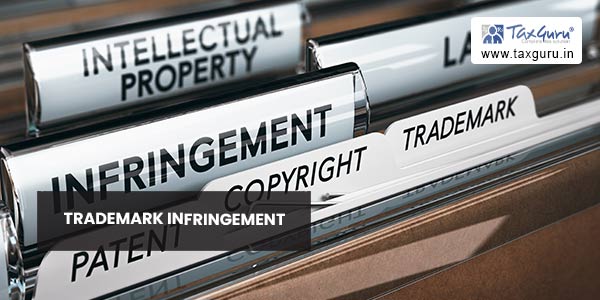What is Trademark Infringement?
Unauthorized use of a trademark, a substantially similar mark, or a tagline on rival or related goods and services is known as trademark infringement. Only in the case of a registered trademark can infringement occur. Without the owner’s or any licensees’ consent, it is a violation of the exclusive rights that are attached to a trademark. Having a trademark denotes a corporation’s ownership of the design and it symbolises the reputation of a company or brand.
The illegal taking of that goodwill to falsely represent and assert a trademark is known as trademark infringement. When employed in commerce, a trademark allows for the separation of one person’s goods or services from those of another and serves to protect the name of the good or service. Therefore, trademark infringement is a false representation of the ability to enhance the value of goods.
Infringing on another company’s trademark causes misunderstandings, deception, or uncertainty about the real source of a good or service.
The key indicator of trademark infringement is whether the accused’s use allowed the ordinary customer a chance to get confused. The most frequent reasons for trademark infringement are employing brand names or logos that are confusingly similar to registered trademarks or are similar to them in some other way for related goods and services.
What amounts to Trademark infringement in India (Ingredients)
Section 29 of Trademark Act of 1999 contains and governs laws pertaining to trademarks. i.e. when it will amount to trademark infringement?
1. Registered trademark –
A registered trademark is any distinctive mark or sign, such as a logo, slogan, word, or taste, that a person, company, or business owns by complying with the legal conditions set forth in The Trademark Act of 1999. Only registered trademarks can be considered to be infringed upon, and unregistered trademark infringement is normally not actionable (the common law tort of “passing off” being one exception). When used in relation to goods or services that are not similar to those for which it has been registered, even a trademark can be used in violation of trademark law.
2. Use in the course of trade
In order to violate a trademark, it must be employed in the management of a business or trade. Trademark infringement does not apply to non-commercial use of a trademark if there is no benefit to the user and no harm done to the company’s brand or financial value.
3. Similarity and Identity
To be considered trademark infringement, the mark, logo, slogan, etc., used must be identical to the original trademark.
4. Confusion in consumers’ minds
Confusion in the minds of consumers should be caused by the product or service. Confusion does not excuse customers from knowing when a trademark is being violated. It will be trademark infringement even if the consumer is aware that a product or service is a copycat but chooses it anyway due to the similar appearance and fake brand value attached to the product (and copycat products are available at a lower price, the original product is unavailable at that time, or any other convenience). The only prerequisite for this head is that any consumer confusion must be likely to be connected to the registered trademark.
5. Unfair advantages
Earning something by utilising the name, resource, etc. of another company/business is known as an unfair advantage or an illicit gain. Trademark infringement occurs when someone uses a trademark without authorization and that usage in any way results in financial gain or favourable treatment in the marketplace. A person risks gaining unfair advantage if they use a registered trademark as their business name or part of it.
6. Use for Packaging or labelling
A trademark is clearly being used illegally when it is used on product packaging or labels. Any such behaviour will be considered trademark infringement because it demonstrates the infringer’s intent.
7. Import and export of goods under the mark
When importing and exporting goods with a registered mark, buyers and sellers can have confidence in the business whose trademark is being used. Therefore, any unauthorised import or export using a trademark that has previously been registered will be considered trademark infringement.
Different Forms of Trademark Infringement
A trademark communicates the origin and calibre of the products or services to the consumer. It demonstrates to a customer where a product originated and how much he can rely on that specific product based on the brand value associated with it. It implies that a trademark demonstrates the goodwill and brand worth of a corporation or business. The company’s reputation and brand value are under attack when trademarks are violated. Both indirect and direct trademark infringement are possible:
1. Indirect infringement of a trademark
It also goes by the name of secondary liability. A common law principle holds someone responsible for persuading a direct infringer to commit a violation. A person who violates a law indirectly may be held vicariously or contributorily accountable. A person will be held accountable for contributory infringement if they are aware of the violation and made a significant contribution to the inducement. Typically, vicarious responsibility is used when there is an employer-employee relationship.
2. Direct infringement
Producing, selling (or attempting to sell), or importing a product while utilising an already registered brand illegally or by someone who does not have the right to use it is considered direct trademark infringement.
Civil remedies for trademark infringement
In cases of unlawful use of trademarks (trademark infringement), the owner of the good or service may be entitled to both civil and criminal remedies. In the event of trademark infringement, the following civil remedies are available:
1. INJUNCTION-
An injunction’s purpose is to prevent a person from engaging in a specific activity or undertaking a specific duty through the proper legal channels (judicial proceedings). A person’s use of the brand without authorization is prohibited in the case of trademark infringement. The court has the authority to issue an injunction order to stop someone from using a trademark going forward. The court may issue a temporary injunction to prevent the accused from using the trademark during the course of the proceedings if it is unclear at that point whether trademark infringement has occurred or not.
2. DAMAGES
Damages are sums of money awarded to someone who incurred an unjustifiable loss as a result of the actions of another person. The majority of civil lawsuits aim to recover damages. 2. The court may also issue a judgement awarding damages for trademark infringement. Typically, a court will give compensation that is greater than the person’s loss.

3. MATERIAL DESTRUCTION AND SEALING
When a trademark is violated, the court has the authority to appoint a local commissioner to seal the offending documents and accounts. Such local commissions may be ordered by the court to completely destroy any infringing material. The court may also order the infringement to bring all items and products bearing the disputed trademark to a legal proceeding.
4. TAKING ACTION TO RESTORE REPUTATION
The infringement may be ordered by the court to take action to repair the damage he caused to the company’s or business’s reputation. This can be accomplished by expressing regret in commercials or by making a statement that restores the public’s confidence in the organisation or business whose trademark was violated.
CRIMINAL PENALTIES FOR TRADEMARK INFRINGEMENT
According to The Trademark Act of 1999, trademark infringement is a cognizable offence, and police are authorised to submit a First Information Report (F.I.R.) and launch an investigation.
Limitation Period—
Since trademark infringement is a persistent crime, there is no time limit on when to file a lawsuit.
Jurisdiction-
According to the guidelines outlined in section 134 of the Trademarks Act of 1999, jurisdiction for a lawsuit alleging infringement is determined. No lawsuit for trademark infringement may be filed in a court that is lower than the district court. The district court with authority to hear the case and located within the municipal limits may receive a lawsuit from the trademark owner.
*****
For any type of assistance feel free to contact or reach us at: – MG Associates (Company Secretaries)- CS Manisha Mittal – 70152-77705
Disclaimer: Although this article was carefully crafted, it should only be regarded as general advice because it has been expressed in general terms. You should not act on the information provided in this article or refrain from acting upon it without first seeking professional advice since it cannot be relied upon to address your unique situation.





